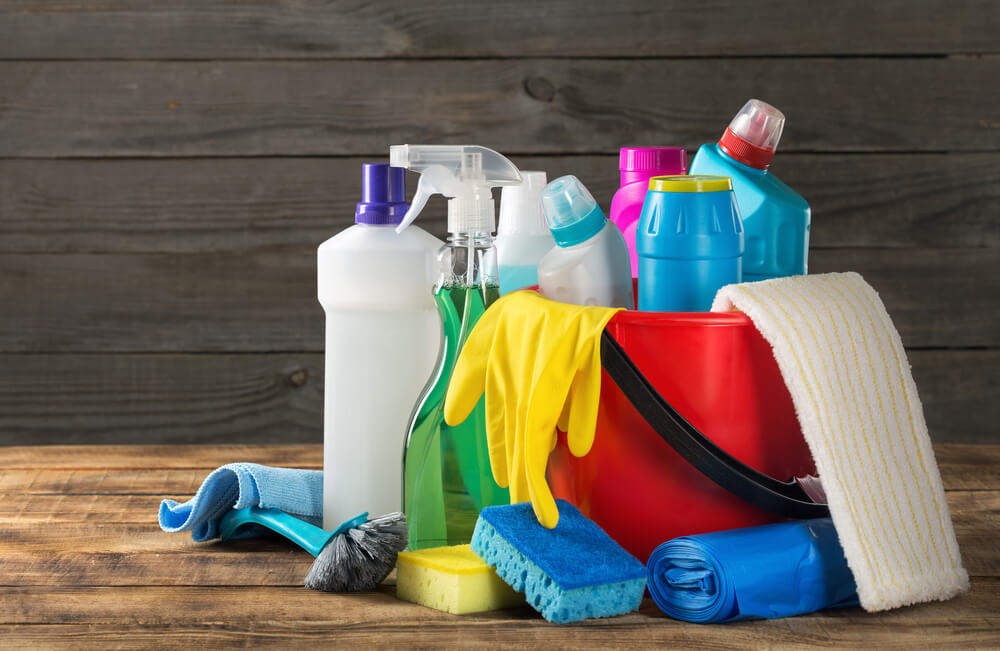Detailed Everyday Cleaning Overview: The Best Way to Scrub the Surfaces, Vacuum Carpets, and Clear Out Any Clutter Successfully
Detailed Everyday Cleaning Overview: The Best Way to Scrub the Surfaces, Vacuum Carpets, and Clear Out Any Clutter Successfully
Blog Article
Recognizing the Requirement for Extensively Sanitizing and Sterilizing Frequently Touched Surfaces in High-Traffic Locations
In the realm of public health and safety, the meticulous disinfection and sanitization of frequently touched surface areas in high-traffic locations stand as vital measures in avoiding the spread of hazardous pathogens. By exploring the numerous elements of surface area disinfection, from the dangers associated with neglecting cleaning methods to the reliable techniques that can be utilized, a clearer understanding emerges of the vital duty these methods play in securing public health and wellness.
Value of Surface Area Disinfection
Emphasizing the detailed disinfection of high-traffic surfaces is important in keeping a hygienic atmosphere and stopping the spread of dangerous microorganisms. High-touch surface areas such as door manages, light switches, lift buttons, and kitchen counters work as breeding grounds for microorganisms and viruses. Regular sanitation of these surface areas is necessary to decrease the threat of contamination and transmission of diseases.
By executing a durable disinfection procedure, companies and institutions can produce a safer atmosphere for employees, clients, and site visitors. Correct surface disinfection not just mitigates the spread of transmittable illness yet also instills confidence in the cleanliness and safety of the premises. This aggressive approach shows a dedication to health and wellness, which is especially vital in high-traffic areas where the probability of direct exposure to pathogens is heightened.
Moreover, surface sanitation plays a vital duty in total infection control strategies. Incorporated with hand hygiene methods, using masks, and maintaining physical distancing, detailed sanitation of high-touch surfaces forms a detailed protection against the transmission of dangerous bacteria. Prioritizing surface area sanitation is a vital component of a holistic strategy to health and wellness in common areas.
Threats of Disregarding Cleansing Practices
Disregarding extensive disinfection of high-traffic surfaces significantly increases the threat of viral and microbial contamination, posturing a serious risk to the health and wellness and security of individuals often visiting these areas. Failure to execute proper cleansing methods can lead to the buildup and spread of unsafe virus, including bacteria and infections, on regularly touched surfaces such as doorknobs, handrails, lift switches, and countertops.

In addition, overlooking the significance of detailed cleansing not only endangers the wellness of individuals however likewise undermines initiatives to maintain a tidy and hygienic setting. It is important to recognize the relevance of proper sanitation procedures in avoiding the spread of infections and guarding public health and wellness.
Reliable Disinfection Methods
To maintain optimal tidiness and minimize the risk of contamination on high-traffic surface areas, employing effective disinfection approaches is crucial. One of the most reliable and common sanitation approaches is making use of chemical anti-bacterials.
Another effective method is the use of UV-C light. UV-C light has been shown to be effective in killing a large variety of microbes by interrupting their DNA framework, therefore avoiding them from duplicating. It is crucial to make use of UV-C light appropriately, guaranteeing that the appropriate intensity and exposure time are used to accomplish the desired sanitation outcomes.
Furthermore, employing vapor cleansing as a sanitation method can be very efficient, particularly on surfaces that are heat-resistant. Vapor can permeate permeable surfaces and eliminate microorganisms, viruses, and various other pathogens properly. When using heavy steam cleaning, it is vital to guarantee that the surface area reaches the needed temperature level for an adequate amount of time to assure correct disinfection.
Influence on Public Health And Wellness
The maintenance of high standards of cleanliness and disinfection on high-traffic surfaces plays an important function in securing public health and wellness. Regularly touched surface areas in locations with high tramp, such as doorknobs, hand rails, lift buttons, and bathroom centers, offer as reproducing premises for dangerous pathogens.
In high-traffic locations like flight terminals, institutions, medical facilities, and public transport systems, the effect of rigorous sanitation measures can not be understated. Focusing on the sanitization of frequently touched surface areas is a positive approach to promoting public health and great site improving the safety of people in shared rooms.
Applying Routine Cleansing Methods
Quickly setting up and sticking to a consistent routine of cleansing procedures is extremely important for keeping the tidiness and safety and security of high-traffic surfaces. Routine cleansing procedures are vital in avoiding the build-up of germs and microorganisms on regularly touched surfaces, particularly in areas with high foot web traffic. By applying a methodical technique to cleaning, companies can effectively decrease the threat of disease transmission and create a much healthier environment for workers, consumers, and the general public.
To establish an efficient cleansing schedule, it is important to recognize high-traffic locations that require frequent attention. These locations might include doorknobs, hand rails, elevator buttons, toilet centers, and common equipment. Executing a regular cleaning regimen that targets these surfaces several times a day can dramatically lower the spread of hazardous microorganisms and infections.
In addition, utilizing appropriate cleaner and disinfectants is crucial to making certain that surface areas are extensively disinfected. Normal training of cleaning staff on proper cleansing strategies and the importance of adherence to the cleaning schedule is additionally vital in maintaining a sanitary setting. By focusing on regular cleansing procedures, organizations can promote the health and wellness of people who interact with these high-traffic surfaces.

Conclusion
In final thought, it is important to prioritize detailed disinfection and sanitization of regularly touched surface areas in high-traffic areas to protect against the spread of damaging virus and keep public wellness. It is important to acknowledge Visit Your URL the relevance of maintaining tidy surface discover this areas in high-traffic areas to make certain the well-being of the community.
In the world of public health and safety and security, the careful disinfection and sanitization of regularly touched surfaces in high-traffic locations stand as vital measures in preventing the spread of unsafe microorganisms. By discovering the different elements of surface sanitation, from the dangers linked with overlooking cleansing protocols to the efficient methods that can be utilized, a more clear understanding emerges of the important duty these methods play in guarding public health and wellness.In addition, employing heavy steam cleaning as a sanitation technique can be very effective, particularly on surface areas that are heat-resistant. When utilizing steam cleaning, it is crucial to ensure that the surface gets to the called for temperature level for an adequate quantity of time to assure proper disinfection.
In verdict, it is critical to prioritize detailed disinfection and sanitization of frequently touched surfaces in high-traffic areas to stop the spread of dangerous pathogens and preserve public health and wellness.
Report this page